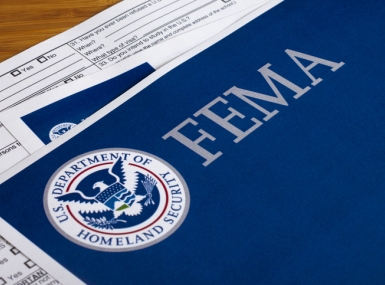Coastal resilience program prepares counties for the high costs of high tides
Upcoming Events
Related News

Four county-based teams have been selected to participate in a new technical assistance and training program focused on strengthening coastal counties’ resilience. The selected teams are from: Santa Rosa County, Fla.; Calcasieu and Cameron parishes, La.; Harrison County, Miss.; and Cameron and Willacy counties, Texas.
A recent report from the Union of Concerned Scientists reveals the economic impacts of projected increases in sea level on coastal communities.
According to the report, approximately 2.5 million residential and commercial coastal properties across the United States currently valued at $1.07 trillion dollars may be subjected to chronic flooding by the year 2100. As chronic flooding affects both properties and other critical infrastructure, local economies risk losing or seeing decreased local tax revenue generation.
Learn More
States with the most homes at risk by the end of the century are Florida, with about 1 million homes or more than 10 percent of the state’s current residential properties, New Jersey with 250,000 homes, and New York with 143,000 homes.
States that could lose the most in home property values by 2100 are Florida at $351 billion, New Jersey at $108 billion, and New York at nearly $100 billion.
Decreases in property values also mean a lower property tax base. Florida, New York and New Jersey will see the biggest hits to their annual property tax revenue with municipalities losing about $5 billion, $1.9 billion and $1.7 billion total respectively.
These numbers do not, however, take into account future adaptation, mitigation and resiliency measures that may be undertaken by coastal communities.
NACo’s Strengthening Coastal Counties Resilience Program, sponsored by NACo in partnership with the Association of State Floodplain Managers, the Coastal States Organization and the National Oceanic and Atmospheric Administration, aims to help participating counties develop action plans that will guide their efforts to protect and strengthen both their natural habitats and economies.
The four teams will receive intensive, hands-on training designed to boost their capacity to better prepare for, plan for, absorb the impacts of, recover from or adapt to extreme weather events and climate-related hazards. Each team will also receive individual assistance to guide implementation of their coastal resilience strategies and projects.
Based on the recent Union of Concerned Scientists report, by the year 2100, the Calcasieu and Cameron parishes, La. and Harrison County, Miss. are anticipated to have at least 6,545 properties subject to chronic flooding under intermediate projected increases in sea level. These properties are currently valued at $ 759,541,032, house 13,593 people and contribute $8,678,443 to the annual property tax base.
The workshop, training, and resources provided to coastal counties through the Coastal Resilience Program will help counties proactively address the economic ramifications of projected increases in sea level.

Attachments
Related News

States file lawsuit challenging FEMA’s new rules on emergency management grants
On November 4, a coalition of 12 states filed a lawsuit against the U.S. Department of Homeland Security (DHS) and the Federal Emergency Management Agency (FEMA), alleging that recent changes to key emergency management grants are unlawful and could disrupt state and local preparedness efforts.

County Countdown – Nov. 4, 2025
Every other week, NACo's County Countdown reviews top federal policy advocacy items with an eye towards counties and the intergovernmental partnership.
FEMA bill staffers offer insights into reform effort
NACo Intergovernmental Disaster Reform Task Force heard from staffers who helped shape a bill that would make dramatic changes to the Federal Emergency Management Agency.